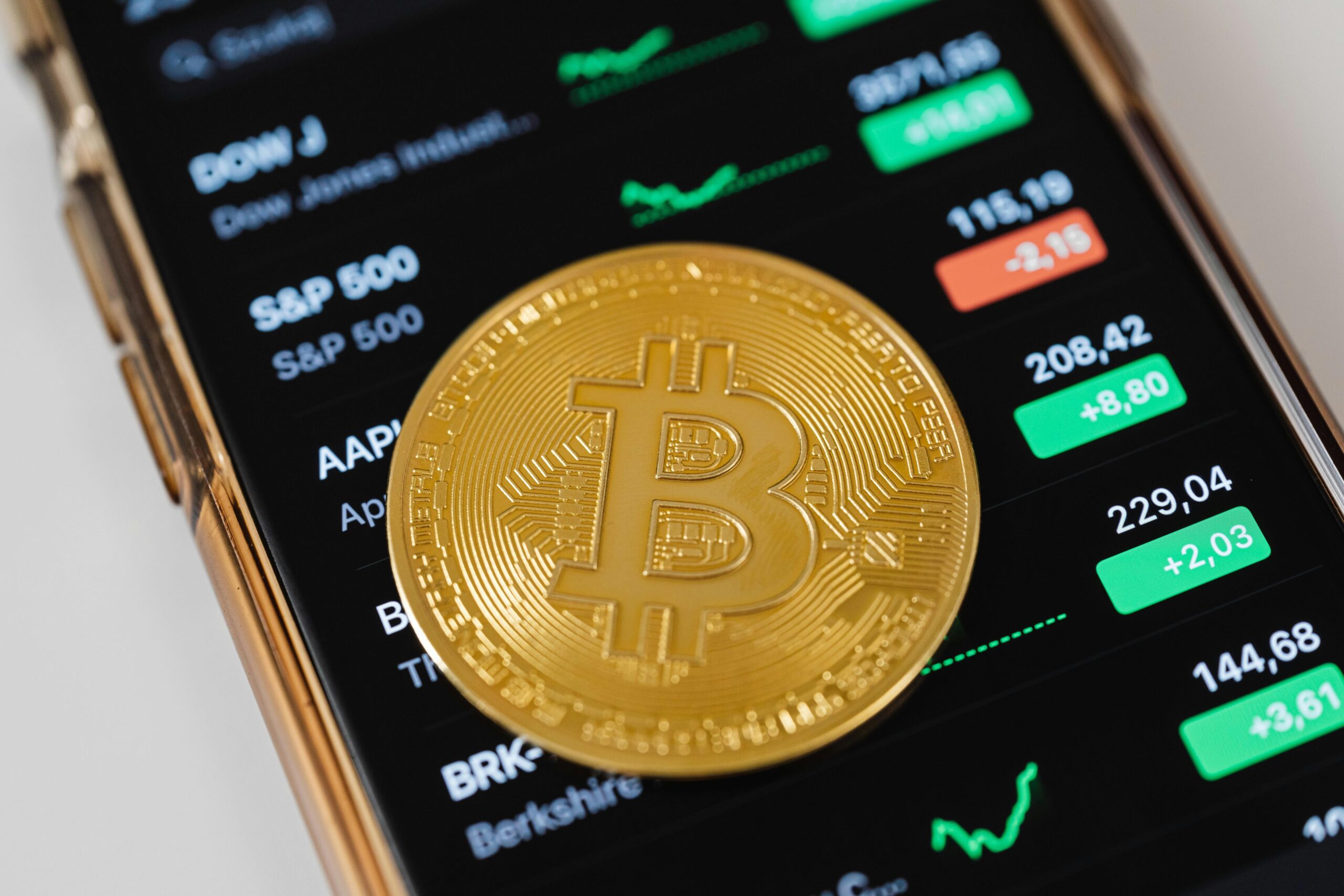Bitcoin on Track for Record Sideways Action, With Eyes on November Elections as Bullish Catalyst
As Bitcoin enters another chapter in its eventful journey, the cryptocurrency is showing a unique pattern that has caught the attention of traders, investors, and market analysts alike: record sideways action. This extended period of consolidation has many going haywire in wondering whether Bitcoin is gearing up for its next big move. With the U.S. Elections scheduled to take place on November 8, to be specific. In fact, with the approaching November elections many believe that political outcomes could act as a bullish catalyst for the world’s largest cryptocurrency by market capitalization.
We’ll be discussing Bitcoin’s market behavior, its historical sense tied to sideways trends, and how the November elections may play out in determining a potential price trajectory. We’ll discuss other reasons for this price action and what investors need to know.
What is Sideways Action in Bitcoin?
A sideways action, sometimes referred to as consolidation, is the event where an asset price remains relatively flat within a limited range over some time. This means that, instead of trending highly either upwards or downwards, the asset price continues oscillating within a given range, thus creating a stagnation pattern. Low volatility, low trading volumes, and a minimum series of price swings may characterize Bitcoins during sideways action.
The sideways action periods can be quite misleading as it could reflect indecision in the markets. Market participants would be unsure as to what could happen to the future of the asset, thus not selling or buying. These sideways action periods usually give away to strong price movements one way or another as soon as the markets come to realize which way is heading.
Bitcoin has experienced extended periods of sideway moves during its history, most notably just before huge bull runs. For example, prior to the late 2020 price explosion, Bitcoin spent a large portion of 2019 and early 2020 in consolidation mode. The current situation is no different with many searching for whether the Bitcoin has finally entered into its next massive breakout.
Key Features of Bitcoin’s Sideways Action:
Low Volatility:
Bitcoins usually spend less time showing volatility during consolidation phases compared to how long it spends when price fluctuations are at their wild peaks.
Defined Range:
The price swings for Bitcoin take place within a defined range. This makes more evident support and resistance points.
Lower Trading Volume: Reduced interest in trading normally translates to lower volumes of trades.
Indecision:
The market is in a balance of power between buyers and sellers; the price cannot be thrust decisively in either direction.
Bitcoin is trading sideways currently
At the time of writing, Bitcoin enters one of its longest experiences sideways action in recent memory. Over the past three quarters, Bitcoin has been navigating in a relatively tight range between $25,000 and $30,000, barely straying more than a few times outside of that. This has led some analysts to call this period a “record” period of sideways trading.

What is Driving the Extended Sideways Action?
The lengthy consolidation period of Bitcoin has several causes:
I see that you have presented a report on the relationship between unpredictability in the macroeconomic environment and the attitude of Bitcoin investors. How would you like me to help you with this information? Would you like me to write on this topic or do you have a specific request concerning this subject?
Institutional Caution:
With more institutional investors flowing into the Bitcoin market, caution is seeping in. Most institutional players wait for clearer signals from the direction inflation and monetary policy will take as well as other financial markets before making serious investments in Bitcoins.
Regulatory Challenges:
Regulatory concerns through both the U.S. and other parts of the globe only leave one wondering about the uncertainty that has been overlaid on the crypto market. People are now paying for events going on around governments and regulators and how they will decide on matters about Bitcoin and the overall categories of cryptocurrencies, with recent activities undertaken by bodies like the SEC and CFTC.
Market Maturity:
The bitcoin market matured significantly since its genesis ten years ago. Since this asset class is increasingly becoming an inherent part of mainstream financial markets, price action comes to be less swayed by volatility extremes and more dictated by the forces of traditional markets.

Support and Resistance Levels
Set during this consolidation period, the primary support and resistance points for Bitcoin have been established. At the bottom are sellers walking buyers in to create this critical support point in the guise of $25,000. On the bullish side, what sellers are met with is this key resistance of $30,000.
Traders are closely watching for breaks above or below these levels. A break either above or below could be a decisive move and could end the sideways action and bring a new trend. Break above this resistance of $30,000 might mean the start of a new stage in a bullish direction. More declines will continue if a break line occurs below $25,000.
The Role of November Elections
Among the most discussed possible catalysts for Bitcoin’s next big price move is the U.S. midterm elections due to be held in November. As it so often does, political events, particularly those related to regulation in the financial sector or economic policy, usually have a great deal to say with regard to the price of Bitcoin.
Why are these November elections significant for Bitcoin?
Regulatory Clarity:
The future of cryptocurrency regulation may very well be one of the biggest ifs for Bitcoin investors. Results of November’s elections may define how friendly an administration will be toward using technology and innovation to govern the digital asset market. A friendly government of innovation and technology may see less stringent rules on crypto and, therefore, blow more favorably for Bitcoin. A more conservative environment may instead leave investors rather bearish.
Effects on Monetary Policy US Elections would also impact monetary policy:
But if inflation becomes the central concern and the Federal Reserve continues with tightening stances, Bitcoins might be in for a risk. However, when such an election translates into changing the economic policy, it becomes friendly to Bitcoin to operate.
Global Market Sentiment:
U.S. elections have a tendency to sway the global market sentiments. If the ease in the election outcome spurs positive vibes for financial markets, investor confidence would likely to build up and may spill over into the cryptocurrency space. Bitcoin, being often perceived as an instrument that hedges traditional financial systems, would also gain where investors may show more interest in it while rallying post-election.

Historical Precedent
Bitcoin again saw large price movements for other significant political events in previous elections. For instance, its price rose from about $11,000 in September to more than $19,000 in November 2020, primarily based on the hope of fiscal stimulus and monetary policy ease of outlook following the U.S. presidential election.
Although not as consequential as a presidential election, the midterms will still determine the future course of U.S. policy, especially financial regulation and the economy at large. Therefore, most analysts believe a positive outcome will spur a new wave of buying pressure in Bitcoin.
How Bitcoin Could React After the Election
The election dust settles, and the price action in Bitcoin may be influenced by the following factors:
Bullish Scenario:
The election of a more cryptocurrency-friendly government-a forerunner to regulation and innovation-must cause a big breakout in Bitcoin, bringing in the institutional players and increased demand and prices due to clarity. A dovish monetary policy election could also create a risk-on climate that increases Bitcoin’s appeal.
Bearish Scenario:
Meanwhile, if elections result in higher regulatory scrutiny or tighter restrictions on crypto, it may place bearish pressures on Bitcoin. If elections further enforce hawkish monetary policy in the interest of a continued Fed interest rate hike, then Bitcoin and risk assets are more likely to suffer traction gains. More!
Neutral Scenario:
It is also possible that the elections will not have major implications for Bitcoin in the near term. And in this case, Bitcoin might go ahead with its sideway action as investors shall continue waiting for clearer signals from regulation, monetary policy, and macroeconomic conditions.
Broader Factors That Could Influence the Price of Bitcoin
While the November elections will indeed be something to pay attention to, there are quite a few other things that could influence the price of Bitcoin in the coming months:
Institutional Adoption:
Continued institutional adoption might be one of the strongest drivers of price growth. As instances go, over the last few years, institutions such as MicroStrategy, Tesla, and more recently Square, have added Bitcoin to their balance sheets. If that continues, it’s going to create sustained demand for Bitcoin and push prices higher.
Global Macro Conditions:
Macro factors, including inflation, interest rates, and tension geopolitical, are already beginning to drive prices of Bitcoin. As the different central banks continue to tinker with their policies in terms of inflationary pressures, Bitcoin will be useful in some economic conditions as an alternative hedge for currency devaluation.
Technological Developments:
Bitcoin’s underlying technology is still under development. Upgrades to and developments of the Bitcoin network-technologies like Taproot-continue to emerge. Advances in technology may make it even more utility and scalability-focused, which could spur even more adoption.
As one would expect with any financial asset, market sentiment was also operational in guiding Bitcoin’s price action. News events, market narratives, and investor psychology could continue to input short-term price swings. In this new light, if the narrative is truly adopted that Bitcoin will be a safe haven or inflation hedge, a bull market may renew.
Conclusion: Bitcoin on Track for Record Sideways Action, With Eyes on November Elections as Bullish Catalyst
The enormous anticipation in the market was built up by Bitcoin’s extended sideways action, with traders and investors waiting eagerly to be unleashed on its next move. Thus, given that the November elections are viewed by most analysts as a potential catalyst that might break Bitcoin out of this consolidation phase and start a new trend, trading is more likely to be carried out within the range rather than breaking resistance.
Be that as it may, elections are likely to mark a break-out, trend down, or range-bound continuation for Bitcoin based on an ensemble of development factors, such as regulatory developments, monetary policy, and broad market conditions. For now, Bitcoin remains in holding pattern; however, the next few months may be pivotal for its journey.
As is always the case, investors must stay current, keep an eye on those levels of support and resistance, and stay aware of the broader market environment in making decisions about Bitcoin. Regardless of the outcome, resilience and a growing institutional presence suggest that Bitcoin’s role within the global financial system has hardly begun.

2 thoughts on “Bitcoin on Track for Record Sideways Action, With Eyes on November Elections as Bullish Catalyst”